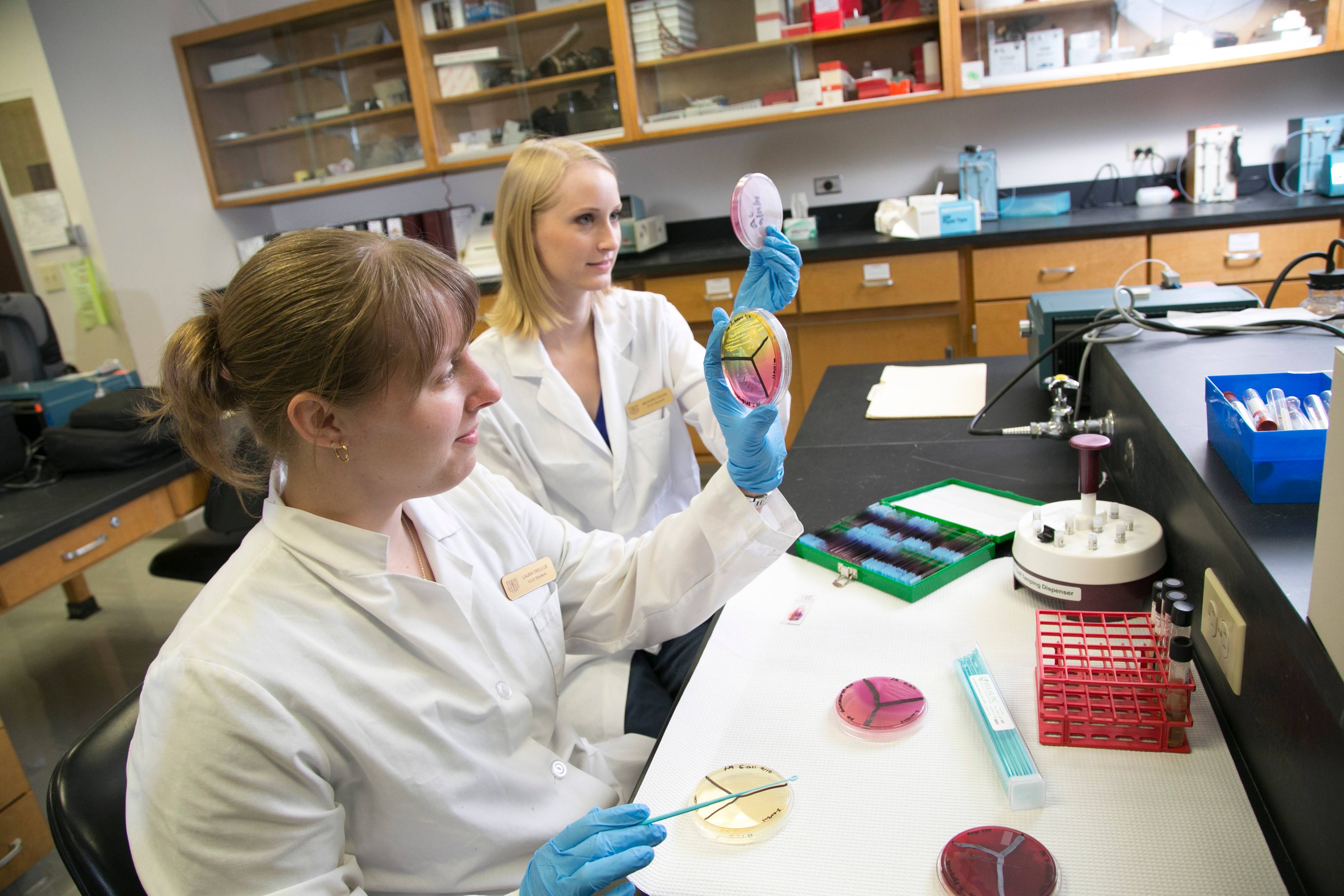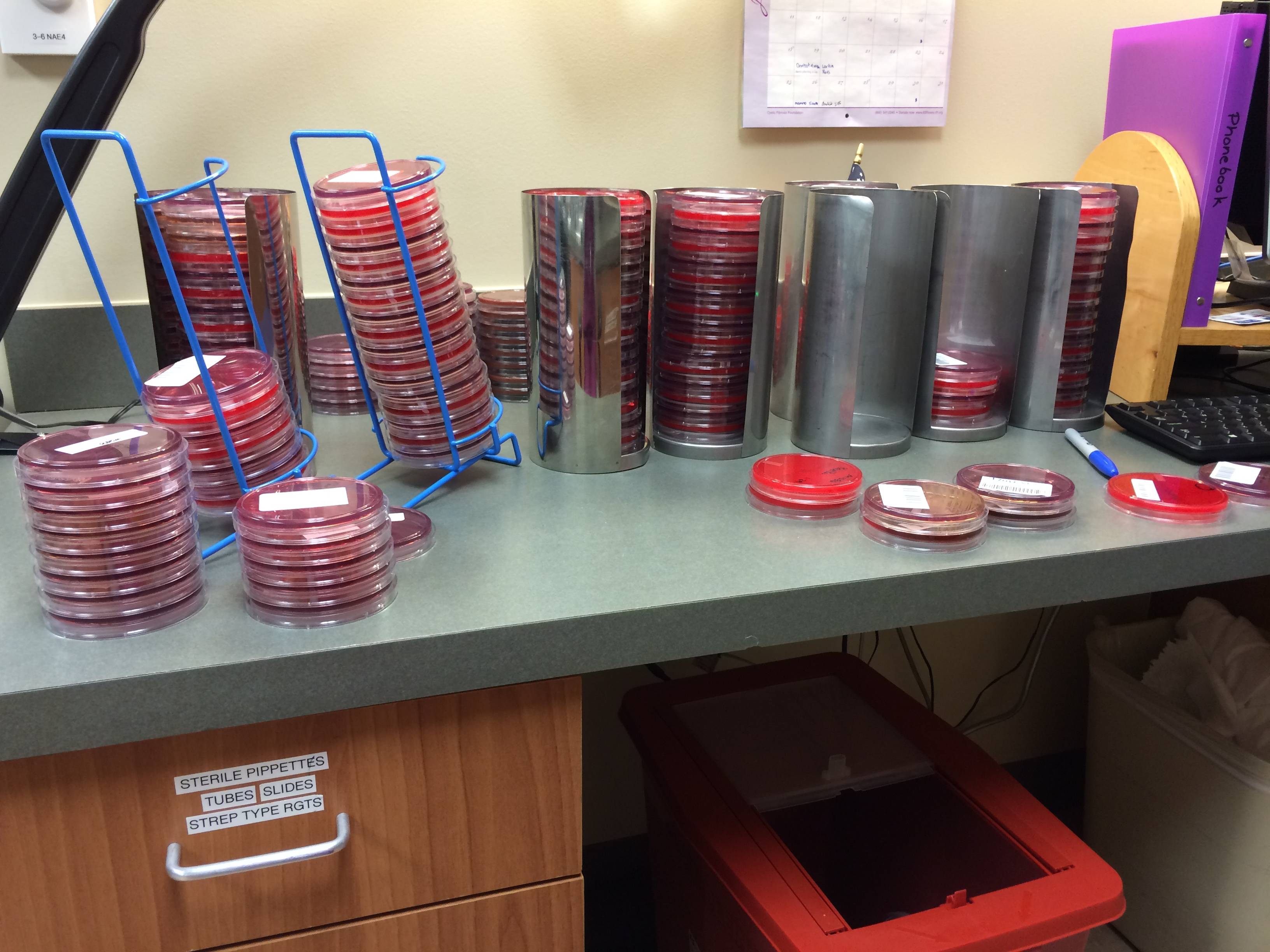Micro Checklist

Microbiology Clinical Rotation
Objectives, Expectations, and Competency Checklist
MICROBIOLOGY COMPETENCY CHECKLIST
OBJECTIVES:
After completion of coursework and this clinical experience, the MLS student will be able to:
- Correlate labeled specimen with accompanying requisition slip, determine if the specimen is acceptable is acceptable or unacceptable, and decide what specific media needs to be used for primary isolation.
- Select appropriate media, inoculate properly, and incubate in appropriate manner.
- Process correctly all paperwork accompanying incoming specimens; if available, using a computer-managed data system.
- Discuss which microorganisms are considered normal flora and under what circumstances.
- Discuss which microorganisms are considered potential pathogens.
- Discuss which microorganisms are considered obligate pathogens.
- Discuss the uses and limitations of gram stain evaluation of clinical specimens.
- Describe the various approaches and methodologies employed in processing clinical specimens.
- Prepare and stain direct smears (gram and methylene blue) and wet preps (KOH, India ink, Trich. smear, etc.) of sufficient quality to yield appropriate information.
- Demonstrate the ability to recognize cells and microorganisms on direct smears and wet preps.
- Recognize hyphae, pseudohyphae, yeast, and other fungal elements using Lactophenol Cotton Blue, Calcofluor, and KOH preparations.
- Recognize Trichomoniasis sp. in a wet prep.
- Perform a colony count on urine cultures and calculate the number of organisms per mL.
- Properly perform various rapid biomechanical tests commonly used in the microbiology lab such as catalase, coagulase, Strep. grouping, oxidase, nitrate reduction, motility, spot indole, and serological typing to aid in the identification of an organism and recognize when each tests needs to be done.
- Identify enteric bacteria on primary plate media and use rapid identification (automated) for identification.
- Distinguish between Staphylococcus epidermidis and Staphyloccus aureus by using coagulase test, and Staphylococcus epidermidis and Staphylococcus saprophyticus by using Novobiocin susceptibility test.
- Recognize an organism on plate media and recall tests necessary to accurately identify organism.
- Properly perform the Kirby-Bauer antimicrobial susceptibility test if available.
- Use the germ tube procedure and sucrose assimilation tests to differentiate Candida albicans from other Candida species if available.
- Perform wet prep and concentration technique for O & P on stool specimen.
- Observe and identify Pneumocystis carinii organisms if available.
- Perform the Formalin-Ether (sodium acetate) sedimentation concentration procedure (or equivalent concentration technique) for the identification of parasitic organisms.
- Perform latex agglutination tests for bacterial antigens (meningitis, cryptococcal, etc.)
- Identify Clostridium difficile by serologic methods.
- Proficiently stain smears of Mycobacteria by the carbolfuchsin stain and the fluorochrome stain and recognize organisms by these staining methods.
- Process specimens for decontamination and concentration of Mycobacteria.
- Use the niacin, nitrate 68o catalase, arylsulfatase tests to identify the commonly isolated Mycobacteria species if available.
- Set up blood cultures and perform follow-up examinations.
- Perform anaerobic culture methods.
- Perform a spinal fluid cell count, Gram stain, India ink preparation on cerebrospinal fluid if available.
- Perform gross examination and occult blood tests on stool specimens if performed by this department,
- Record patient’s test data in appropriate specimen acquisition log. Maintain department quality control records and other quality assurance practices.
- Recognize and observe safety procedures in the microbiology laboratory at all times.
- When given an unknown specimen, use the proper method of isolation, and accurately identify the microorganism(s).
- Perform an MIC or determine break point values on selected antimicrobial drugs.
- Use computer assisted data management system(s) for the speciation of microorganisms, MIC of antimicrobials, and epidemiology surveillance of noscocomial microorganisms.
- Perform rapid molecular testing (FDA approved) of certain microorganisms ( i.e. DNA probe from Gen-Probe and Nucleic acid amplification test-ligase chain reaction (LCR) from Abbott for Neisseria gonorrhoea or qPCR for methicillin resistant Staphylococcus aureus (MRSA).
EXPECTATIONS (of Texas State MLS students)
- Review the objectives for the clinical microbiology rotation before you go on the rotation (and, it doesn’t hurt to take them with you to check off what you’ve done or haven’t done).
- Perform the Gram stain review on Medtraining (if you take the time to do the clinical gram stain in entirety, you will find it offers a nice prep); it also wouldn’t hurt to review some basic bacterial groups like Staph versus Strep/Enterococcus, Enterics, non-fermentative gram negative bacilli, Neisseria, and the anaerobes (again, you don’t want to cram this all in one day but continually review while you are on the rotation)
- If you haven’t notified your rotation site, be sure to do so today to let them know you are coming and to find out what time you are to be there, where to park, clothing, and any other concerns you have.
- Be ON TIME, wear your scrubs if you have them (you can also take a lab coat, but many places will provide that), take your student TX State name tag, student handbook/review book, notify your lab contact and us if you are not going to make it because of sickness, emergency, etc.
- ON THE JOB-Observe universal precautions at all times; be attentive and proactive in your learning; ask if you don’t understand something but try not to “nag” (in other words, you shouldn’t have to ask how to do the gram stain five times in the first hour); show interest and enthusiasm; do not get caught up in lab/office politics/personnel feuds/etc.
- Every clinical site is a little different; try to be intuitive with the “workflow” and culture of the lab; you only have an opportunity to be there 3 weeks so try to fit in
- This is YOUR opportunity to network with future employers and all of our sites communicate with each other about you and your peers….so, treat this like a 3-week interview!
- Learn from the different MLS and MLT professionals that you are around. Many of them have years of practical experience and “tricks of the trade” that are hard to show in a teaching lab on campus.
- Do not be afraid of repetition. The more times you can read clinical gram stains or plates, the better. This is important. It will help you on your rotation exam and on your certification exam, ask for “unknowns” to do if you have some down times.
- Stay for the entire “shift”; be courteous and grateful to our clinical sites as we rely on them for future rotation; YOU are representing not only yourself but TEXAS STATE and the MLS program.
